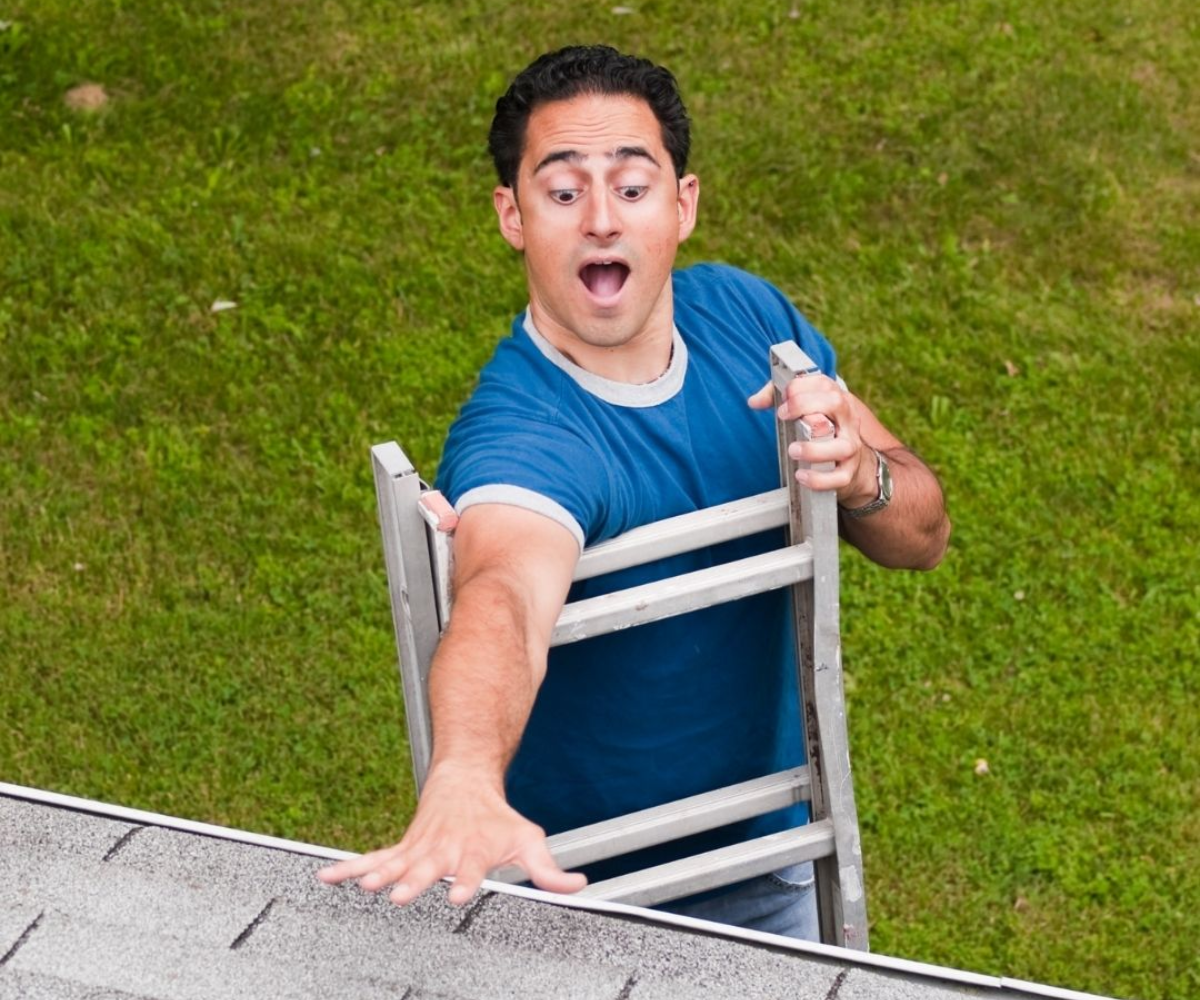Ladder Falls are the Most Common DIY Injury

Ladder Falls are the Most Common “Do-It-Yourself” Injury
According to a study by the Australian Institute of Health and Welfare falls from ladders were the most frequent Do-It-Yourself (DIY) injury during 2013-2014, with nearly 1 in 10 resulting in an intracranial injury such as a concussion. After a concussion, some people may suffer persisting symptoms, such as memory and concentration problems, mood swings, personality changes, headache, fatigue, dizziness, insomnia and excessive drowsiness for several weeks to months.
Falls are now the main cause of traumatic brain injury across the developed world, due to ageing populations. The risk of mortality linked to a brain injury is high, 1 in 6 Australians hospitalised for a falls-related brain injury will die, in Australia, DIY injuries were most frequent in men aged 65 to 74 and ladder-related falls were the most common cause of injury, accounting for more than one-third of injuries overall. Head and neck injuries accounted for nearly 1 in every 5 of admitted to hospital “DIY” fall injuries (brain injury Australia, 2009).
The Lack of a Proper Ladder Stabilization is One of The Main Causes of Ladder Falls
Three stories of ladder fall victims and chronicles their fall, recovery and life after the ladder injury.
Nick, fell from a ladder while inspecting a leaking roof five years ago and has not fully recovered from his injuries.
“…Nick decided to check a leaking roof, but he didn’t stabilise his ladder. He thought he’d be right and it wouldn’t take long. But half way up, he fell. He sustained a brain bleed, a fractured back, pressure on his spinal nerves, and a blockage in an artery to his lung, and lung scarring. Nick’s wife and son now care for him, as he continues his recovery.”
The Australian consumer protection regulators’ national education campaign ‘Ladder safety matters’ encourages older men to stop and think before they use a ladder, you can Listen to John tell Nick’s story in the video below
Paul’s story
Paul was sanding the outside of his residence when he overreached and fell more than two metres from a ladder.
Mick’s story
Mick, an active retiree, fell from a DIY structure he had set up to trim a hedge.
The Australian Institute of Health and Welfare has Sugested to Consider the Following Considerations When Using a Ladder:
- choose the right ladder for the job
- don’t work in wet or windy conditions
- take time to set up your ladder
- work safely up the ladder
- have another person hold the ladder
- know your limits and work to your ability.
According to The Australian National Coroners Information System Indicates The Average Age of People Who Die in Ladder-related Accidents is 65 Years Old
- 32 % of deaths were in the 70–79 year age group
- 96 % of fatalities were male
- over 85 % of deaths occur in non-occupational activities
- 34 % of these deaths occur during home maintenance activities..
Ladder injury occurs in an older age group than DIY injuries in general — the peak age for DIY injuries is 30–34 years.
The ACCC Suggests to Keep in Mind The Following Safe Use Tips
- Read the safety warnings on the ladder and follow the manufacturer’s advice.
- Ensure the ladder is in good condition and fitted with non-slip safety feet. Store it in a dry place to prevent warping or corrosion.
- Place the ladder on dry, firm and level ground that is clear of power lines and exposed electrical wiring, and engage all locks and braces.
- Secure the top of an extension ladder into position before starting work. The top of the ladder should extend at least one metre over the top of the surface it is resting on.
- Stay in the centre of the ladder as you climb. Never lean out too far from a ladder, always work within arm’s reach and be careful when pulling items from shelves, gutters and roofs as this may cause you to lose your balance.
- Only climb to the second rung from the top of a step ladder or the third rung from the top of an extension ladder.
- Two people should never climb the ladder at the same time even if their combined weight is below the maximum weight capacity.
- Ensure the ladder is the right height for the jobs you are likely to use it for.
- Check the weight capacity of the ladder.
- If you are a senior citizen or a person with disability you may be eligible for assistance with home maintenance from either your council or local agencies.
- Never use a ladder if you are alone and cannot get assistance if you have an accident.



